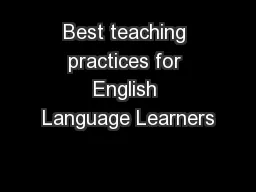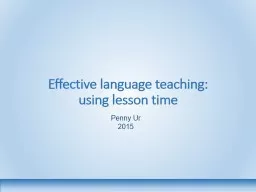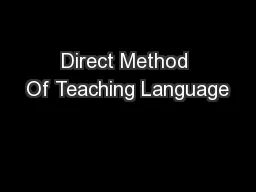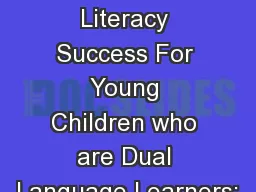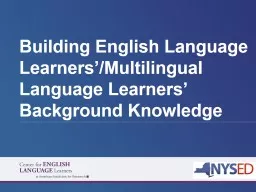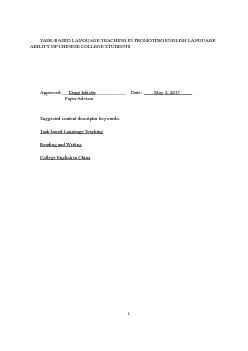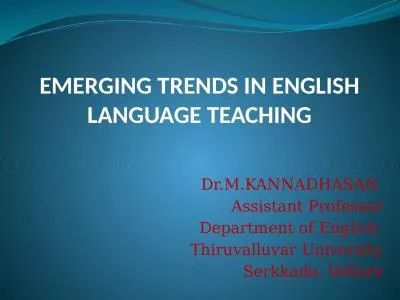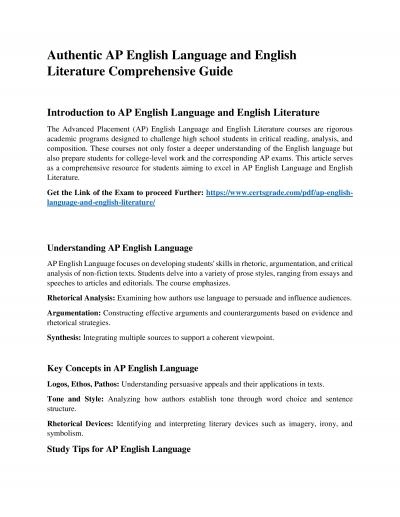PPT-Best teaching practices for English Language Learners
Author : alexa-scheidler | Published Date : 2018-11-03
Dr Gayle Bortnem Emeritus Associate ProfessorNSU April 13 2018 SD Early Childhood Conference
Presentation Embed Code
Download Presentation
Download Presentation The PPT/PDF document "Best teaching practices for English Lang..." is the property of its rightful owner. Permission is granted to download and print the materials on this website for personal, non-commercial use only, and to display it on your personal computer provided you do not modify the materials and that you retain all copyright notices contained in the materials. By downloading content from our website, you accept the terms of this agreement.
Best teaching practices for English Language Learners: Transcript
Download Rules Of Document
"Best teaching practices for English Language Learners"The content belongs to its owner. You may download and print it for personal use, without modification, and keep all copyright notices. By downloading, you agree to these terms.
Related Documents

